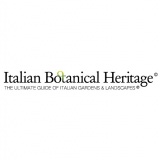
The Gargano National Park is the spur of Italy, which takes the form of a boot. The nature of this promontory is calcareous and was originally completely covered by forests, now reduced to 15 percent of the original surface, among which we point out the Umbra Forest, the green heart of the entire park.
The entire park is made up of Nature Reserves such as Varano Island, on the Garganico coast, from which the lake takes its name; Torre Mileto, Saracen tower that is now a centre where to book visits to the park; Lesina Lake, particularly for fishing eels and birdwatchers, thanks to the presence of heron cinerino and white heron.
Very peculiar is the presence of beech trees (woods in Fagus sylvatica), which are 300 meters above sea level and are rich in centuries-old specimens. There are also many yewberry (Taxus baccata), hornbeam (Carpinus betulus) and Aleppo pine (Pinus halepensis).
Gargano is also the richest territory in Europe and in the Mediterranean Basin of wild orchids, of which more than 80 different species belonging to 17 genera have been registered, some of them endemic or subendemic to the Gargano as Ophrys promontorii, Ophrys sipontensis, Ophrys argolica subsp. biscuit, Ophrys bertoloniisubspsp. Bertoloniiformis, Ophrys holosericea subsp. apulica, Ophrys holosericea subsp. parvimaculata, Ophrys exhalted subsp. archipelagos, Ophrys scolopax subsp. horned, Ophrys iricolor subsp. lojaconoi, Orchis quadripunctata and Serapias orientalis subsp. apulica.
From a faunistic point of view, the presence of roe deer is very important, which a European project is trying to save, creating clearings in the forest to be used as shelter.
Thanks to the great variety of environments that have not yet been anthropized, in fact, about 2,000 botanical species grow in the Park, equal to 33 per cent of Italy's botanical wealth. Among these, 88 species of the 100 orchids present in Apulia and 230 in Italy.
Among the orchids present in the Gargano, there are for example Anacamptis pyramidalis, Anacamptis collina, Anacamptis coriophora subsp. fragrans, Anacamptis morio, Anacamptis papilionacea, Anacamptis pyramidalis, Gymnadenia conopsea, Neotinea tridentata, Seriapias lingua, Orchis italica, Orchis quadripunctata, Ophrys bertolonii, Ophrys holosericea subsp. apulica, recently discovered, Ophrys crabronifera subsp. biscutella, Ophrys sipontensis, Ophrys sicula, Ophrys tenthredinifera, and, of very new classification, Ophrys mortinatae, in the past confused with the oriental species Ophrys bremifera. Their blooms run from January to September, but the best period is between late March and early June.



